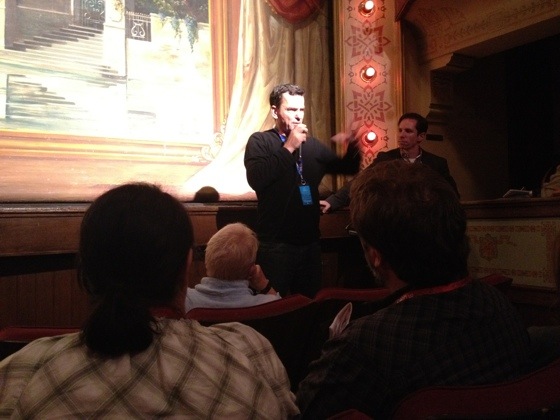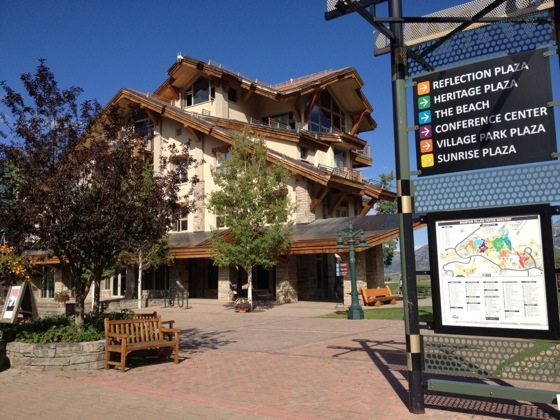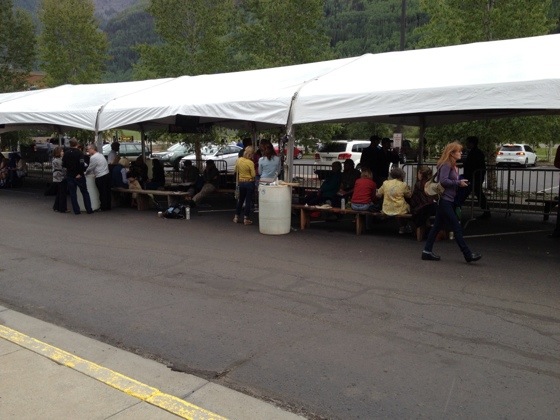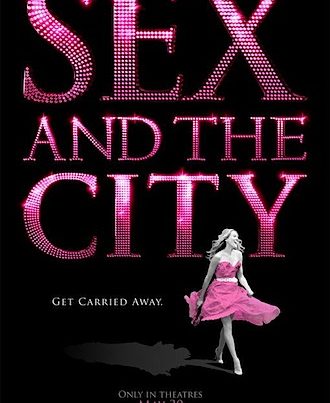Saturday dawned early and I was grateful that the first screening of the morning was at the Chuck Jones’ in Mountain Village, barely a fifteen minute shuttle from my accommodation. Time to grab a coffee and then wait in line for an 8.30am repeat of the Roger Corman Tribute from the night before. This time the host and interrogator would be Leonard Maltin (familiar to all New Zealanders of a certain age, I think) instead of Todd McCarthy.
Before Mr Corman was invited on stage, we got to see an excellent documentary on his life and work, Corman’s World: Exploits of a Hollywood Rebel. After that, Corman entered the stage to a standing ovation and we were treated to insights and stories from an exceedingly well-educated and thoughtful entrepreneur and artist for almost an hour. The surprise for me was hearing about Corman’s liberal politics and how he might have steered his filmmaking in that direction if it hadn’t been for the commercial failure of The Intruder (1962, starring William Shatner as a white supremacist).
Then it was straight down to the town in the gondola to try and get in to see the first screening of Baumbach and Gerwig’s NY comedy of hipster manners, Frances Ha. And, like quite a few of us, I missed out.
I’m going to try and explain the Telluride admission system here but it’s a complicated combination of social engineering and algebra, so forgive the digression. Key to the whole culture of Telluride is the queuing system. No one books in advance for any sessions – you just turn up and hope to get in. The system seems to combine the class-consciousness and hierarchy of the court of Louis XIV and a positively Soviet commitment to standing in line. At each venue there are two queues: “patrons” and “passholders”. Actually, strike that – there are three queues. There’s always a forlorn group of people without passes hoping there’ll be spare seats that they can buy.
“Patrons” are special passholders, sponsors, donors, guests, etc. who have the right to turn up as late as fifteen minutes before a show. They in turn are seated in order of “Show Ring” supporters first, then “Patrons” and only when they are in do the passholders get admitted. These people have been given a laminated card with a number on it, denoting their place in their queue (supposedly allowing you to leave and come back but I only saw people use that privilege for bathroom or concession stand visits). Staffers regularly do manual counts of the patrons area and the numbers are relayed to a central computer which updates the number of queues issued on big screens at all the venues. This year, Telluride had an app for the first time and the numbers were updated there too.
This means, of course, that there’s always a chance of missing out which is what happened to me at Frances Ha. In an ideal world, you can get an early idea of whether you are likely to get in or not based on the length of the queue and can rearrange your schedule accordingly. This year there was a lot of angry muttering from passholders (many of long-standing) that the festival had oversold and that there were too many “patrons” arriving too late and still taking seats. The Show Ring supporters, incidentally, pay $25,000 a year for their rights – and they commit to a minimum of five years – so you can see why they get their treatment, as well as being thanked first at every screening.
To a Wellingtonian, used to Ticketek’s flawed pre-booking system, this seems insanely low-tech and high maintenance but there’s a method in their madness. The queue is an important part of the Telluride culture – it’s where you meet people, chat, get tips, swap stories about celebs you’ve seen. It brings people together. It’s pretty easy to start or join a conversation with someone in line and – at the media briefing – Tom Luddy joked that they were considering banning cellphones in the queues as well as the cinemas. Still, I couldn’t get to another screening to replace Frances Ha, so went to the Telluride Historical Museum instead.
Not wanting to miss out, I arrived an hour early for Barbara (a stand-out at the New Zealand International Film Festival back in July, but one I had missed that time around). Like almost all TFF screenings this was introduced by the director, Christian Petzold and there was to be a Q&A session after the film. This screening was in the Sheridan Opera House, one of the more bizarre venues in the festival. It’s a tiny little U‑shaped frontier theatre that looks like it had dancing girls on stage as recently as earlier that night. As it isn’t a purpose-built cinema the screen is high and the angle steep and I was in the fourth row.
Barbara was brilliant. A perfectly paced evocation of East German paranoia, as Nina Hoss’s quietly anti-establishment doctor wrestles with her desire to escape to the West and her need to stay and look after the victims of the GDR régime. It was so nice to see a director who still knows how to use a tripod. Petzold’s Q&A was delightful. He was intimidated by how close we all were, worried about his English, but determined to entertain and inform us. It was brilliantly hosted by someone who I later found out was Scott Foundas from the Film Society of Lincoln Center – someone who does this stuff for a living. Note to NZFF: if you get a good and knowledgeable host, director Q&As don’t have to be embarrassing. Note to TFF: get your hosts to properly introduce themselves every time – we don’t always know people by sight.

Christian Petzold and Scott Foundas at the Sheridan Opera House. I shouldn’t have taken this picture, sorry.
The first of these lessons came up at the next screening, the tribute to Marion Cotillard at the Palm (the High School performing arts centre). For the first hour of the evening, we watched a highlights reel and then Ms Cotillard (tiny and radiant) received her Telluride Silver medal and then sat to be interviewed by Todd McCarthy of the Hollywood Reporter. Whether it was her English or his limp questioning (I suspect the latter), this was not terribly illuminating and proceedings were only enlivened when surprise guest James Gray (director of Two Lovers and We Own the Night) arrived to play a scene starring Ms Cotillard from his next film – which he joked was still titled Untitled James Gray Project even though it is well into post-production.
Funny as he was, he managed not to overshadow the tributee and nor did her co-star in Rust & Bone, Matthias Schoenaerts, who also made it on stage for a moment or two. Then we got to see Audiard’s almost-Cannes-winning follow-up to Un prophète, which was extremely good and extremely challenging. Despite the presence of Ms Cotillard, though, it is Schoenaerts’ picture and it was impossible to believe that the warm and funny guy we’d just seen was the same feral brute we were watching on screen.
After Rust & Bone, I was invited to a party which I will spare you the details of – except to say I made it to the last gondola ride up the hill with minutes to spare.



